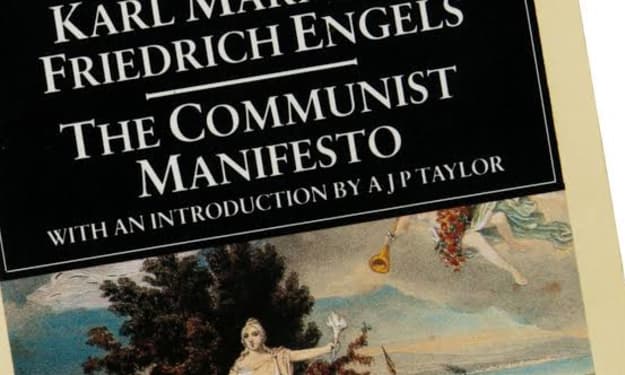A Beginners Guide to Understanding the Plot of Moby Dick
"A Beginner's Guide to Understanding Moby Dick: Unraveling the Plot, Themes, and Symbolism of Herman Melville's Timeless American Classic"

Moby Dick is a classic American novel written by Herman Melville in 1851. The novel is set in the mid-19th century and follows the journey of Ishmael, a sailor on a whaling ship, as he becomes obsessed with the idea of hunting down a giant white whale named Moby Dick. Despite its length and complex themes, the novel has remained a popular and influential work of literature. However, for readers unfamiliar with the book, its plot and symbolism can be difficult to understand. In this article, we will provide a beginner's guide to understanding the plot of Moby Dick, exploring its major themes, characters, and symbols along the way.
Introduction to Moby
Moby Dick is a classic novel written by Herman Melville and published in 1851. The book is considered a masterpiece of American literature and is a story of revenge, obsession, and the struggle against nature. The novel follows the character Ishmael as he sets out to sea on the whaling ship, Pequod, and encounters the infamous white whale, Moby Dick. In this article, we will provide a beginner's guide to understanding the plot of Moby.
Background information about the book
Moby Dick was written during the 19th century, a time when the whaling industry was at its peak. The book was a commercial failure when it was first published, but it has since gained critical acclaim for its literary merit. Today, it is considered one of the greatest novels in the English language.
Author's inspiration for writing the book
Herman Melville spent time as a sailor during his younger years, and it is believed that his experience at sea inspired the story of Moby Dick. The author was also interested in the concept of the white whale. In the book, the white whale represents the ultimate challenge for the whalers, and Melville was fascinated by the idea of this elusive and powerful creature.
The Setting and Characters
The whaling industry and its impact on the setting
Moby Dick is set in the 19th century during a time when whaling was a major industry. The story takes place on the whaling ship, Pequod, which is captained by Ahab. The ship is on a voyage to hunt whales and collect their oil, which was used for lighting and lubrication in the 19th century.
The main characters in Moby
The main character in Moby Dick is Ishmael, a sailor who joins the crew of the Pequod. The captain of the ship is Ahab, who is obsessed with finding and killing the white whale, Moby Dick. Other notable characters include Starbuck, the first mate of the ship, and Queequeg, a harpooner and Ishmael's friend.
The White Whale and its Significance
Symbolism of the white whale
The white whale in Moby Dick is a symbol of ultimate power and defiance. It represents the struggle against nature and the human desire to conquer it. The whale is also a symbol of the unknown and the uncontrollable.
Moby's role in the plot
Moby's role in the plot is central to the story. Ahab is obsessed with killing the white whale, and this obsession drives the narrative. The whale becomes a metaphor for the ultimate challenge and the ultimate failure.
Themes and Motifs in Moby
Exploration of themes such as revenge, obsession, and mortality
Moby Dick explores themes such as revenge, obsession, and mortality. Ahab's pursuit of the white whale is driven by his desire for revenge, and this obsession ultimately leads to his downfall. The novel also explores the theme of mortality, as the characters are constantly facing danger and death while at sea.
Analysis of motifs like the sea and the color white
Motifs in Moby Dick include the sea and the color white. The sea represents the unknown and the uncontrollable, while the color white represents purity and power. These motifs are used throughout the novel to emphasize the power and mystery of the white whale.
The Plot of Moby
Moby Dick is a novel written by Herman Melville and tells the story of Ishmael, a sailor who boards the ship Pequod, captained by Ahab, in pursuit of the great white whale, Moby Dick. Throughout the story, the characters face trials and tribulations as they seek revenge on the whale that has caused them harm. The novel is divided into three parts: Ishmael's introduction to the whaling world, the crew's pursuit of Moby Dick, and the aftermath of their journey.
Overview of the story's structure
The structure of Moby Dick is unique in that it includes various digressions and philosophical discussions. The novel starts with Ishmael's narrative that serves as an introduction to the whaling world, followed by the crew's journey that is interspersed with historical and scientific facts. Lastly, there is the tragic and dramatic climax that brings the story to a conclusion.
Summary of each chapter
While it is impossible to cover every chapter in detail, it is worth mentioning some of the most significant events in the book. In the first part, Ishmael meets Queequeg, a harpooner from the South Pacific, and the two of them embark on the Pequod. The second part sees the crew encountering Moby Dick for the first time and failing to kill it. The third part revolves around Ahab's obsessive pursuit of Moby Dick, leading to his eventual death and the destruction of the Pequod.
Symbolism and Allegory in Moby
Moby Dick is known for its rich symbolism and allegory. In the book, the white whale represents an enigma or an unattainable goal. The whale also serves as a symbol of nature's power to both create and destroy. Additionally, the book explores themes such as mortality, fate, and free will.
Explanation of symbolic elements in the book
Other symbolic elements in the book include the tattooed markings on Queequeg's body, which represent his personal history and beliefs. The ship itself can be seen as a symbol of human society, and each character on board represents a different aspect of human nature.
Analysis of allegorical meanings in Moby
One of the main allegorical meanings in Moby Dick is the conflict between good and evil. Ahab's quest for revenge can be seen as a representation of humanity's desire for power and control. The whale's destructive power is a reminder of the destructive nature of humanity's quest for dominance over nature.
Critical Reception and Legacy of Moby
Despite being a commercial failure during its time, Moby Dick has become a classic and has had a significant impact on literature and popular culture.
Historical context of the book's publication
Moby Dick was published in 1851 during a time of great social and political change in America. The country was on the brink of civil war, and the novel's exploration of themes such as race, class, and power made it relevant to the time.
Influence of Moby on literature and popular culture
Moby Dick has inspired countless writers and artists since its publication. It has been adapted into films, TV shows, and even an opera. The novel's exploration of human nature and the natural world has led to it being seen as a masterpiece of American literature.In conclusion, Moby Dick is a profound and complex novel that has captivated readers for over a century. While it can be daunting for beginners, this guide has hopefully provided some clarity on the plot, themes, and symbolism of the book. By understanding the story of Ishmael and his quest for the elusive white whale, readers can appreciate the novel's profound commentary on life, death, and the human condition.
FAQ
Is it necessary to read the entire book to understand its plot?
While it is recommended to read the book in its entirety to fully appreciate its themes and symbolism, a basic understanding of the plot and major characters can be gleaned from summaries and analysis.
What is the significance of the white whale?
The white whale, Moby Dick, is a symbolic representation of nature's power and mystery, as well as a metaphor for the futility of human obsession and revenge.
Why is Moby Dick considered a classic of American literature?
Moby Dick is considered a classic of American literature due to its exploration of universal themes such as mortality, obsession, and the human condition, as well as its innovative literary techniques and use of symbolism.
What influence has Moby Dick had on literature and popular culture?
Moby Dick has had a significant influence on subsequent literature and popular culture, inspiring numerous adaptations, imitations, and homages in film, television, and other media. Its impact can be seen in works ranging from Jaws to The Old Man and the Sea.





Comments
There are no comments for this story
Be the first to respond and start the conversation.